


















homes awaiting demolition.
Once known as the “Dogpatch” of Greater Victoria – a sleepy bedroom community with few jobs and even fewer amenities – Langford has spent years reinventing itself. Today, it’s hailed as one of B.C.’s fastest-growing communities.
But amid the cranes and condos, some residents fear the shine is starting to fade – as garbage, graffiti and squatters creep into neighbourhoods now dotted with empty, rundown
And with that decline comes with it a new nickname making the rounds among frustrated locals.
“Slum city,” suggests Heidi Viher. “The situation has become a a dumpster fire.”
Brock Avenue resident Viher looks out her front window every morning at two derelict houses across the street – one with a blue tarp makeshift roof, the other its windows and doors boarded up. “It breaks my heart,” she says.
The two vacant homes, along with three
currently occupied Strathmore Road houses, are slated to make way for a new six-storey apartment building, named Oak House.
The properties are owned by Langford Landing Development, which last year applied to the City of Langford to rezone the five lots to allow for the 123-rental unit building.
Viher says she was aware a new development was planned when she bought her home three years ago – but she’s seen little progress since, only mounting problems.



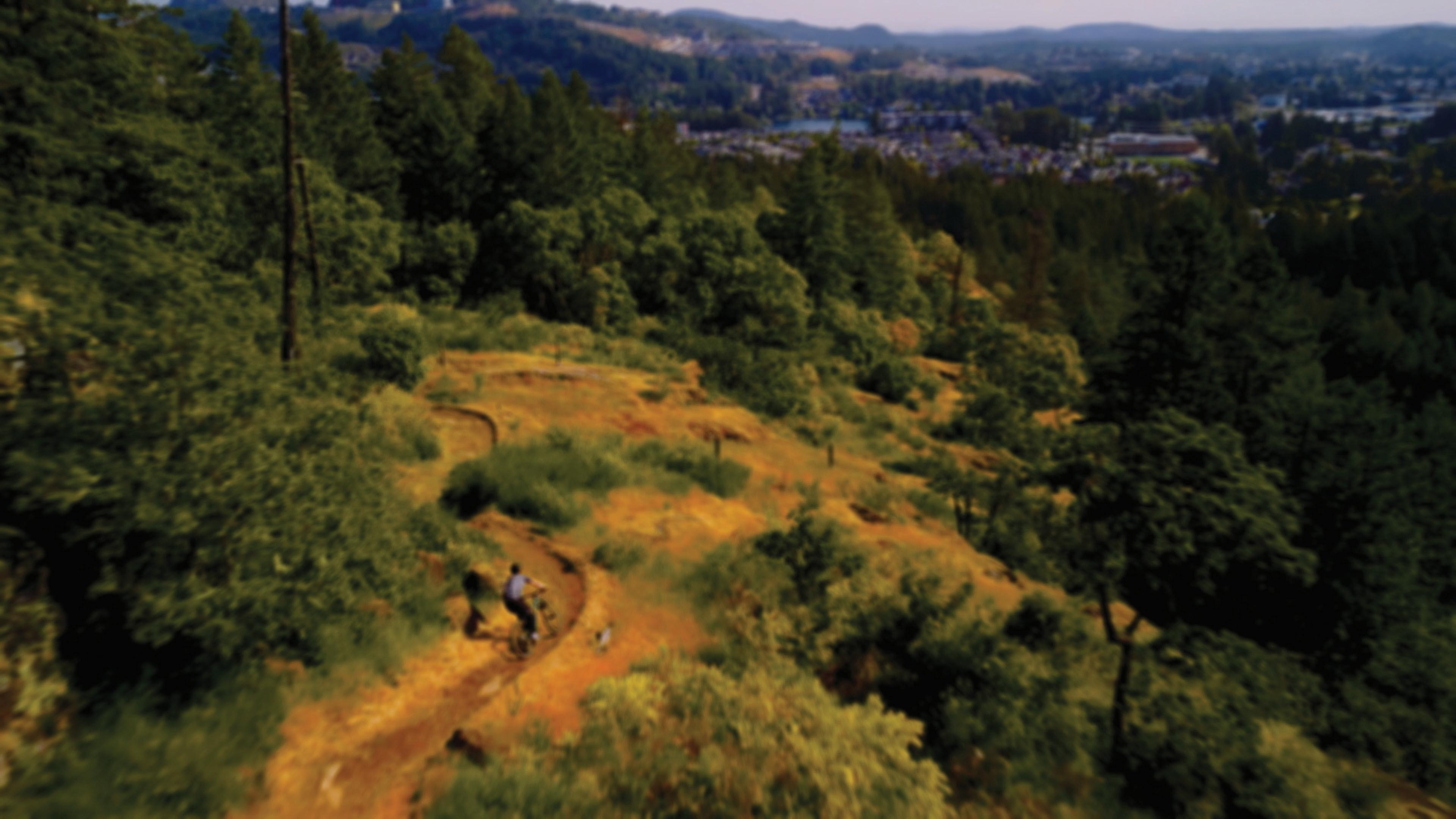



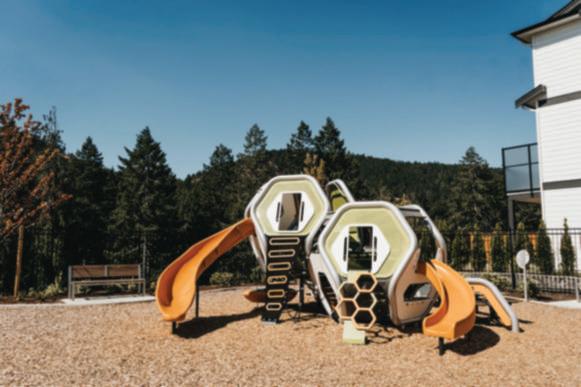
“It’s become a magnet for crime,” she says, listing break-ins, late-night prowlers and drug use as some of the incidents she and her neighbours have endured. “These are big issues and at least some of them are attributed to having these slum elements in our neighbourhood.”
Rodents have also become an increasing problem in the area too, she says.
More recently, squatters moved into one of the buildings – fencing erected around the two lots after they were evicted.
“It reduces the morale of our neighbourhood,” said Viher. “We are feeling fearful of our neighbourhood.”
Another resident neighbouring the Brock Avenue lots says life next-door has been “horrific.”
“It’s just an eyesore,” they said. “I actually want to flee Langford … I don’t want to live here anymore.”
The issue extends beyond Brock Avenue.
On Arncote Avenue and Sunderland Road the story is much the same – boarded-up homes, smashed windows, graffiti-covered walls and an ever-growing collection of garbage.
“It makes me uncomfortable living here,”said Samantha Proctor, who lives nearby with her husband and seven-month-old twins.
“It’s sad to see that the developers just don’t care.”
Similar to Viher’s experience, Proctor says her neighbourhood has seen a rise in anti-social behaviour.
“I don’t feel as comfortable walking by myself around town anymore, which is kind of sad … it makes us think about having to leave,” she said.
The affected properties are owned by Langford Gateway Developments, which in 2021 announced plans for two condominium towers – one 22-storeys, the other 18.
Those plans were later scrapped, and the land put up for sale earlier this year under a court order after Lanyard Investment Inc.
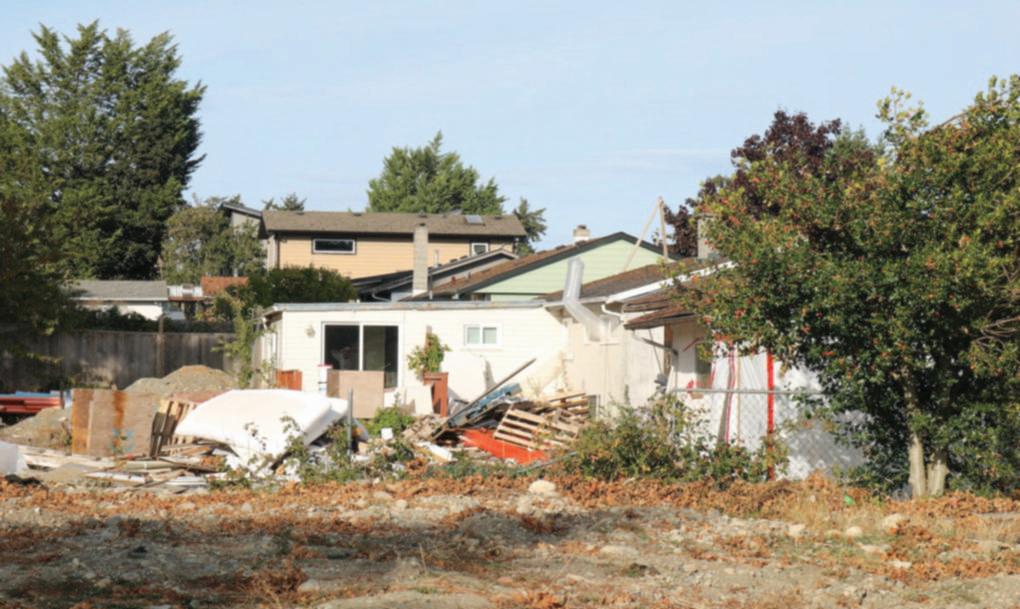
said Vancouver-based Cynterra Group, the company behind the project, and Langford Gateway Developments had defaulted on their mortgage.
CBRE Victoria, the commercial real estate investment firm overseeing the sale for Lanyard, says it has received a “conditionally accepted offer” for the land assembly.
“While we understand and share the concerns raised by the City of Langford and neighbouring residents (and would note that such condition of the property is a breach under the mortgage), the mortgagee does not have the legal right to enter or undertake any work at or on the property,” said senior vice president Ross Marshall.
“Legal control and responsibility for site maintenance remain with the registered owner, Langford Gateway Developments Inc.”
Elsewhere in the city, other land assemblies
sit in limbo – marked for development but showing few signs of progress.
On Dunford Road, five vacant houses stand behind a tall blue fence, their windows and doors boarded up, waiting for demolition.
Meanwhile on Knotty Pine Road, there appears to be some relief for nearby residents, as remediation work is underway on four buildings, slated for demolition - a townhouse development proposed instead for the site.
Viher wants developers to be held accountable and required to follow strict timelines once projects are approved.
“Once that’s done, they need to demolish the area they’re redeveloping and clear the site,”she says. “If it has to sit as bare land for five years until they have funding, fine – but don’t leave these derelict buildings in our neighbourhood.”
She believes the City of Langford must do more to support affected residents, by putting
policies in place that compel developers to maintain or clear properties in a timely way –without leaving surrounding residents to live with the consequences.
Langford Mayor Scott Goodmanson says the city shares residents’ concerns about properties left unfinished or “significantly neglected.”
“While Langford supports development to meet housing needs, council is concerned about the negative community impacts from some construction sites, including those where construction has been substantially delayed,” he said in a written statement.
To address those issues, the city is bringing forward its Construction Impact Management Strategy and a new Good Neighbour Policy, with the first round of bylaw and policy amendments expected this fall.
“These initiatives aim to ensure development is timely, respectful, and considerate of neighbourhoods, and will encourage vacant building removal in a timely manner and more comprehensive property maintenance prior to construction commencing,”said Goodmanson.
He added that the city is also considering designating “certain properties” as nuisance sites under the Community Charter. A staff report outlining next steps is expected to be presented to council in the coming weeks.
In the meantime, a city bylaw enforcement officer has been assigned to focus specifically on construction site compliance and development.
“This officer works directly with developers, ensuring they understand their responsibilities and adopt best practices from the earliest stages of permitting,” explained Goodmanson.
For Viher, the city’s Good Neighbour Policy can’t come soon enough. Now, she’s organizing her neighbours to launch a Block Watch program – not because she wants to, she said, but because she feels she has no other choice.
“The disrespect for our community by these developers is disgusting,” she said.
View Royal is asking locals to help it shape the future of the Western Gateway Community Corridor.
Later this month, the town will host a workshop and two come-andgo open houses to gather feedback about the multi-modal route, which provides access to the Blink RapidBus line, Galloping Goose Trail and surrounding neighbourhoods.
In a news release, View Royal says it is exploring future land-use options along the corridor, including opportunities for new housing, businesses, services and employment spaces.
The corridor is the area along Island Highway from the Colwood border to the Atkins Interchange.



The open houses take place Oct. 18 from 10:45 a.m. to 2:30 p.m. at the Juan de Fuca 55+ Activity Centre and Oct. 22 from 5 to 8 p.m. at View Royal Town Hall.
The community workshop is slated to take place Oct. 18 from 9:30 to 10:30 a.m. at the Juan de Fuca 55+ Activity Centre.
View Royal will also be posting a Western Gateway Community Corridor survey, available from Oct. 10 to Nov. 9, to gather feedback. Paper copies will be available at town hall.
This work is all part of the town’s move to update its official community plan, which serves as the community’s long-term blueprint that guides
decisions about land use, housing, transportation, parks, the environment and the economy.
“Input from our community plays an important role in shaping how our town grows and develops over the coming decades,” View Royal said in the same news release.
To find out more, visit viewroyal.ca

Christine van Reeuwyk
The latest on-the-ground volunteer with Metchosin Search and Rescue has four legs but mostly uses her nose to do the work.
The three-year-old Lab is extremely friendly with zero aggression toward people or animals and a drive to work, with the energy and endurance to handle the task.
“She wants to be out there,” handler Sandra Hardy said. “They have to have the innate drive to want to go search for things.”
Hardy and her partner adopted three-yearold Lab Venna from a local rescue a couple of years ago with no intention of finding a working dog.
“She was going to be our adventure buddy, going out on trail runs and hikes. After we adopted her, I realized ‘I think I might have accidentally adopted a SAR dog’,”said Hardy, an eight-year volunteer with the Metchosin team.
Early last year, the government reopened the possibility for teams to have canine capability. Before that, unless teams already had active dogs, they couldn’t start a team.
Hardy saw all the qualities in Venna – confirmed during a BC Search Dog Association assessment camp in September 2024 – and the duo embarked on training immediately.
One year later, RCMP dog handlers at a similar BC Search Dog Association camp validated Venna. Hardy can’t say enough about the work the association does, with two “amazing” multi-day camps each year, affording volunteers an opportunity to work with good instructors and other handlers. For the local duo, that training served as a foundation for everything
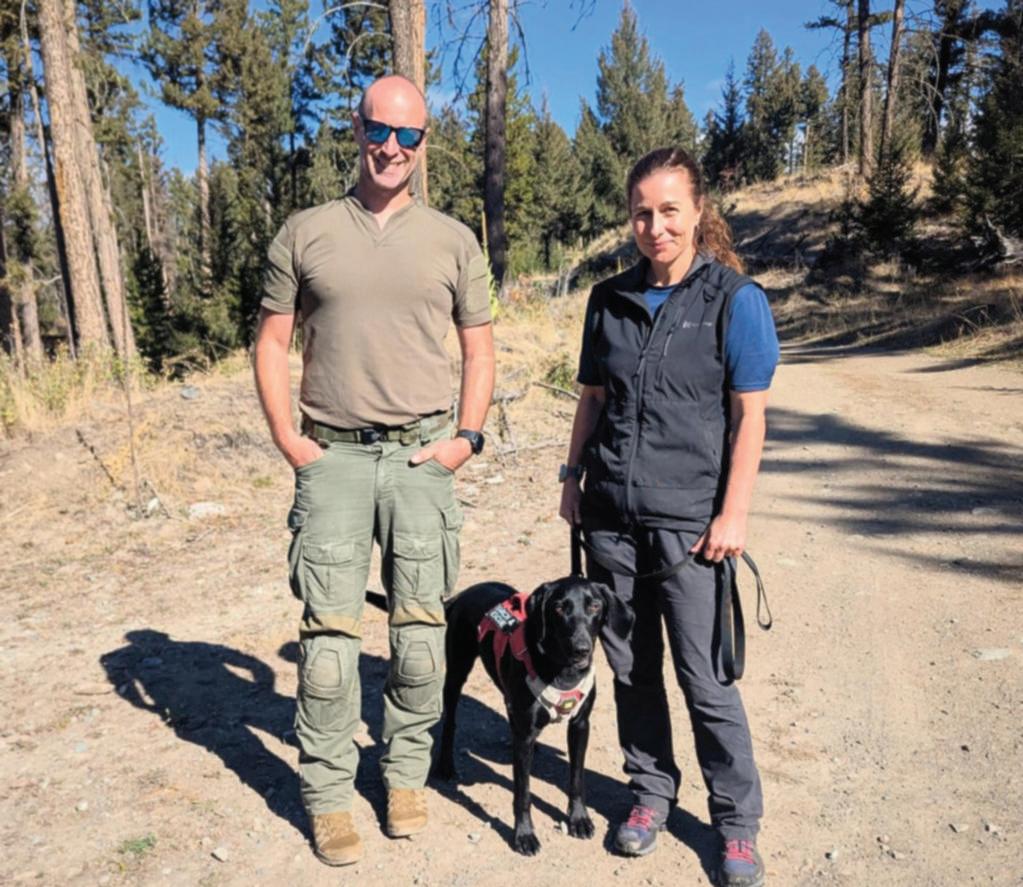
they worked on between the camps.
It was a team sport getting Venna validated, with volunteers helping to be “lost in the forest” along the way.
It’s been well over a decade since the volunteer Metchosin SAR, founded in 1989, had a qualified dog team, and it’s the only one on the South Island – the next nearest is in Nanaimo.






The team provides SAR services for Metchosin, Langford, Colwood, Highlands, View Royal, Esquimalt, Victoria and Oak Bay, and serves as a mutual aid resource for other areas of the CRD and province, including neighbours Juan de Fuca and Peninsula Emergency Measures Organization.
“There are a lot of our groups working together. They have specialty teams that are doing rope rescue and swiftwater, where Metchosin doesn’t have that. So it’s amazing we can all work together to hopefully get people home safely,” Hardy said.
With certified searchers, team leaders and managers hailing from across the region it serves, Metchosin SAR responds to an average of 15 calls a year.
For Venna, joining the team is a joy, Hardy noted. She gets to go out and run around the forest looking for things. For Metchosin SAR, it’s another option to find people quickly and efficiently.
Venna uses air scenting, seeking out any human scent, either from skin or a piece of clothing.
“Because she’s so agile, she can travel through this terrain way quicker than we can. So she’s moving really quickly through the forest and she covers four or five times the distance doing her pattern work,” Hardy said.
While Venna was honing those skills, Hardy had to learn to be a handler – striking a balance where Venna can work independently off lead, yet under control and, most importantly, safe. “It was like learning a new language,” Hardy said. “We were trying to learn to work together as a team.”




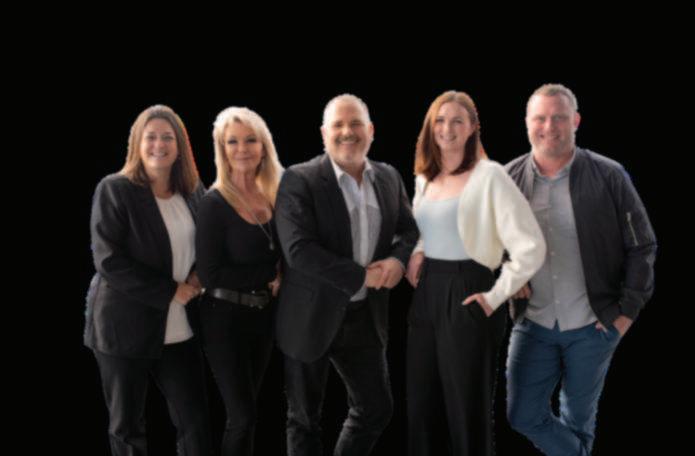
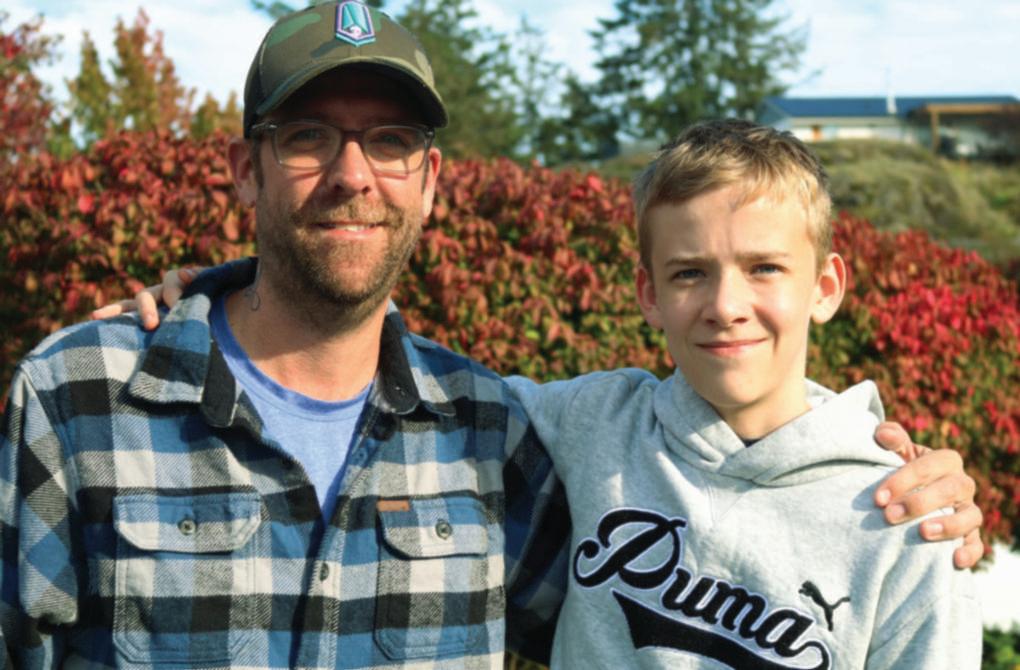
Ben Fenlon
For 14-year-old Mason McGregor, actions speak louder than words.
The Grade 9 Belmont Secondary student spent nearly two years quietly growing his hair – not for style, but for something far more meaningful.
Inspired by his North Saanich grandparents, who both had cancer, Mason has donated his locks to Wigs for Kids, a charity that supplies free real hair wigs to B.C. children affected by cancer or other life-threatening illnesses.
“This was a way for Mason to give back,” said his father, Duncan McGregor.
Once his hair was long enough to donate, Mason and his dad headed to Chatters Hair Salon the day before high school resumed in September.
There, the stylist tied his hair into a braid and snipped it off – all 12 inches of it.
The family then sent the hair to Eva & Co. Wigs in Vancouver, who are partnered with the BC Children’s Hospital program.
“I didn’t tell any of my friends that I was getting it cut, so it was a big shock for them,” said Mason about his return to school, sporting a short back and sides.
For Duncan, it was more than just a haircut – it was a “proud dad moment.”
“I’m just proud of him –his mom too – for sticking it

out, especially through middle school,” he said.
Mason’s grandparents were equally touched by his act of generosity. “It’s just like (Mason’s) grandma says … in a world full of negativity, this is something positive,” said Duncan.
As for how Mason feels, he keeps his response short and simple.
“Great,” he says with a shrug.
But his modesty cannot hide the impact of the experience, which has clearly left its mark – Mason says this will be the first of many charitable efforts.
In fact, his second is already underway – he’s growing his hair again.
A revelation that came as a surprise to his dad. “I’m proud of you buddy,” he said.


Just like his son, Duncan also likes to do his bit for charity. But he won’t be growing out his hair any time soon.
“I’m a bakery manager at Costco, so that’s a lot of hair to fit into a hair net,” he jokes.
Still, he hopes Mason’s actions will inspire others to help out in the community in their own way.
“We were never looking for any recognition or to sit down with the newspaper,” he says.
“But if it can inspire somebody to think about maybe doing a bottle drive or help a charity, that will make this even more worthwhile.”
Mason too hopes others will follow his lead.
“It’s for a really good cause, and I think it positively impacts the world,” he says, encouraging others to do something charitable – big or small.











Michelle Cabana – Group Publisher michelle.cabana@blackpress.ca
A public building isn’t public if everyone in the community can’t use it.
Making buildings more accessible, especially government buildings, is the point of a resolution adopted during the recent Union of BC Municipalities (UBCM) annual meeting in Victoria.
The annual gathering of local politicians from around B.C. routinely asks the provincial government to make changes, and one of this year’s requests came from Saanich council asking the province to upgrade accessibility standards, including in the BC Building Code.
“Accessibility cannot be an afterthought; it must be built in from the beginning,” said Saanich Coun. Teale Phelps Bondaroff, adding that the province’s buildings should reflect dignity, inclusion, and meaningful access for today and the next 50 years.
If you’re able-bodied, you may have never noticed problems getting into a government building.
But folks with mobility or visual impairments have had to struggle with broken elevators, a lack of ramps, awkward doors, high counters, ill-designed washrooms and a dozen other smaller indignities.
Something as simple as remembering to install the toilet paper dispenser close to the toilet in an extra-wide wheelchair stall remains the key.
It sounds funny, until you’re the one sitting there.
A lot of disability rights issues are like that. Failures to make facilities accessible aren’t deliberate cruelties, but they damage people’s dignity and feelings of self-worth.
Some people have relatively obvious disabilities, while others have more minor, invisible ones, everything from being hard of hearing or visually impaired, to having conditions that make standing for extended periods impossible.
When society invests in making our public buildings accessible, we’re investing in our own futures, and in our abilities to keep navigating the world with dignity for the rest of our lives. Accessibility is a near-universal issue, and
The GOLDSTREAM GAZETTE s a member of the National Newsmedia Council, which is an independent organization established to deal with acceptable journalistic practices and ethical behaviour. If you have concerns about editorial content, please contact: editor@goldstreamgazette.com or call 778-746-4010. If you are not satisfied with the response and wish to file a formal complaint, visit the web site at mediacouncil.ca or call toll-free 1-844-877-1163 for additional information.
Copyright and/or property rightssubsistinalladvertisements andinallothermaterialappearing in this edition of The Gazette. Permission to reproduce wholly or in part and in any form whatsoever, particularly by a photographic or offset process in a publication, must be obtained in writing from the publisher. Any unauthorized reproduction will be subject to recourse in law.


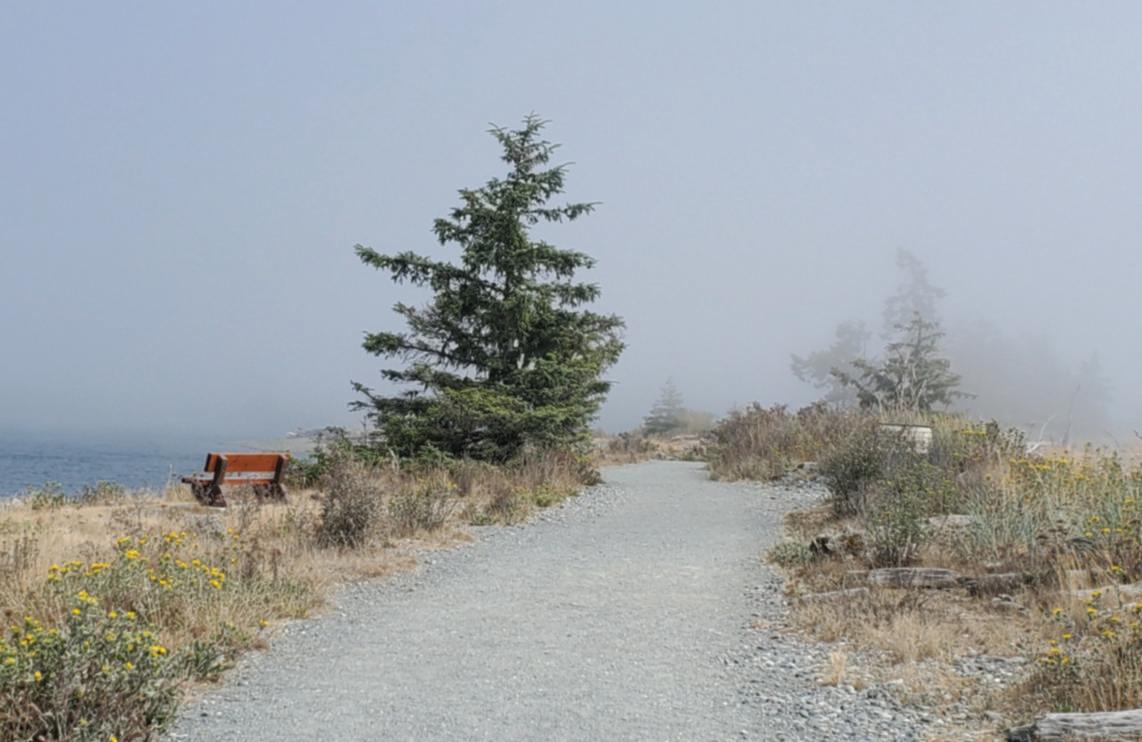
June Pearson took this photo of a foggy day at Whiffin Spit. If you have a photo you’d like to feature in Community Camera, email us a high-resolution .jpg copy to newsroom@goldstreamgazette.com. Please include your name, contact information and where you took the photo.




If you see news happening, call our newsroom at:
or email newsroom@ goldstreamgazette.com
We welcome your opinions and comments. To put readers on equal footing, and to be sure that all opinions are heard, please keep letters to less than 350 words. We reserve the right to edit letters for style, legality, length and taste. We will not publish anonymous letters. Send your letters to: newsroom@ goldstreamgazette.com We want to hear from

A few weeks back, I asked, ‘Is general civility and the use of manners dwindling in 2025?’
Basically, do you see an overall decline of manners or civility in our everyday lives?
Most of the responses I received were along the lines of “yup, a decline” but there was also a goodly collection of “people are still decent”. And I completely agree.
If you’re online a lot like myself (unfortunately), you can be bombarded with nastiness and stupidity.
Endless social media name-calling; opinions not necessarily buttressed by facts but defended to the end based on what ‘side’ you are on; bots weighing in to egg people on… you name it.
But amid the doomscrolling, if you’re looking in the right place, you can still find the sweet spot – where most people can still be found – and see folks simply being good humans. Some of my favourite pit stops as I look online for news stories are the various community groups. If
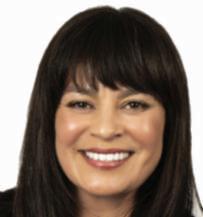
Cathy Webster Publisher cathy.webster @goldstreamgazette.com
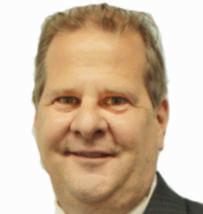
anyone needs anything, you can find a group of people happily rallying to assist.
In this particular case, it was pretty simple. Someone in Errington had run out of dog food and couldn’t make it to the store, or the store was closed. They checked in online with their dilemma and immediately there were a zillion offers to assist.

As much as it must be humbling in some cases to ask for help, I’m telling anyone who does need that help to never, ever be afraid to reach out. Your neighbours will inevitably have your back.
give their time to help out others. And those are always worthy of our praise (and time and money).
And that’s pretty much the way it is in Parksville or Qualicum Beach or Nanaimo or Duncan or Victoria or… you get the picture. I can check into those community groups and inevitably people are offering assistance.
Sometimesit’sjust,“Dang,I’mout of flour,”and other times it’s “I’m a little short of (whatever item) before payday, can anyone help me out?”


I remember as a lad my Mum would be baking and I’d sometimes get sent to a neighbour’s house for a cup of sugar or something along those lines, and other children would sometimes knock on our door to do likewise.
What’s mine is yours kind of thing.
I learned later Mum did that so our neighbours who might really need something wouldn’t hesitate to ask, because of that established sharing ‘arrangement’and that always stuck with me.
Obviously, we have many terrific organizations in all our communities with volunteers who selflessly

But my favourite things remain the simple ones. Watching someone hold a door for someone else. Help someone with mobility challenges across the street. Give up your seat on the bus. Lend a neighbour a cup of sugar. Cart over a bag of dog food. Giving me the courtesy wave when I let you properly merge while driving.
The day-to-day stuff I am certain remains the norm for most folks, despite whatever clouds try to gather online.
And the best part about clicking on a few things like our neighbours sharing dog food? It meant the algorithm gremlins began feeding me all kinds of similar examples of humanity. Much better than doomscrolling.
Philip Wolf is the editor of the PQB News/Vancouver Island Free Daily. He can be reached via email at philip.wolf@blackpress.ca.



Ben Fenlon
A furry four-legged fugitive with a wagging tail and a complete disregard for the speed limit gave West Shore RCMP the runaround during an unusual ‘high-speed chase’ on Sooke Road.
To the disbelief of drivers, a dog was seen running on Highway 14 between Langford and Sooke, tailed by an RCMP cruiser – and according to witnesses, a Capital Regional District (CRD) bylaw officer in hot ‘paw-suit’.
Among those caught up in the action Wednesday afternoon (Oct. 8), was Mikayla Hansen and her husband Dane, who were driving from the Highlands to a house viewing in Sooke, when traffic slowed to a crawl.
“We were joking, thinking it was maybe the Sooke traffic already starting up,” said Hansen. “But then my husband spotted a bylaw officer … and then the RCMP pulled out in front –that’s when we spotted the dog.”
The bylaw officer, she said, pulled over early and jumped out to chase the dog on foot, leaving most of the pursuit to the Mountie behind the wheel. Travelling at roughly 20 km/h, Hansen estimates roughly 100 vehicles were backed up behind them, with traffic travelling in the opposite direction also affected.

Hansen filmed the chase, which shows what appears to be a husky-type dog bounding down the highway.
“It looked like it was just having a little run – it didn’t seem scared or anything,” said Hansen. “We just thought he was going for an adventure.”
Hansen said the RCMP followed the canine for roughly eight minutes — about two kilometres – before managing to get ahead of it near the approach to Sooke.
The officer left their vehicle and was able to guide the dog safely onto a driveway.
“Thankfully with some ‘paw-some’ teamwork between our officer and a member of the CRD animal care team, there was a ‘paw-sitive’ outcome,” said West Shore RCMP media relations assistant Hayley Ferguson. “They were able to get the pup off the road together and then get in touch with the owner thanks to the dog having a tag.
“A good reminder to have a contact tag on the collar and to register your animal with CRD.”
For Hansen and her husband it will be a experience they won’t forget in a hurry.
“We were pretty mind blown by the whole thing,” she said. “It’s not something you see every day.”









October is Canadian Library Month, and the Greater Victoria Public Library (GVPL) is inviting the community to discover everything a library card can offer.
From expanded collections and new technology to welcoming spaces for learning and leisure, GVPL continues to evolve to meet the needs of the community.
GVPL is encouraging readers, gamers and learners alike to come and explore their catalog, with the following offerings:
New favourite space: Libraries have cozy seating, bright reading nooks and quiet study zones.
Families can also explore new themed play areas rolling out at several branches this year, creating must-visit interactive, family-friendly environments that encourage creativity and exploration.
World language collection: GVPL’s growing world languages collection includes new titles in Arabic, Chinese, Japanese, and Spanish. Discover international literature, practice a new
language, or connect with heritage.
Digital Media Lab: Now open at the Esquimalt Branch, The Lab lets the public convert photos, VHS tapes, cassette tapes, and other media to digital formats.
Game collection: GVPL’s game collection now includes Switch 2 releases alongside favourites like Animal Crossing and Pokémon. Borrowing games is a fun, cost-effective way to enjoy family game nights and solo adventures.
Screen-free storytelling for kids:
This month, GVPL will introduce read-along books with built-in audio and Yoto players that pair with story cards.
Families can borrow players with card bundles, or just the cards for those with devices at home.
“Public libraries are cornerstones of strong, connected communities,” says Maureen Sawa, CEO of GVPL. “Whether you’re a parent joining early literacy programs, a student seeking a quiet study spot, or a retiree exploring new hobbies, a library card
opens the door to endless opportunities to learn, create, and connect.”
With over 3.5 million in-person and online visits each year and one of the highest circulation rates per capita in Canada, many residents of Greater Victoria are already frequent library users.
Canadian Library Month is the perfect opportunity to experience firsthand how a library card can spark learning, creativity, and connection. Apply online or visit any branch for a free library card.
Tony Trozzo
The West Shore RCMP saw a modest rise in overall calls for service in the first half of 2025, with 12,886 files opened between January and June – up 3.17 per cent from 12,447 during the same period last year.
While many categories saw only minor fluctuations, several stood out for significant changes.
Shoplifting cases increased 25.7 per cent, total drug offences rose 33.3 per cent, and traffic warnings were up 19.7 per cent compared to early 2024.
In contrast, impaired driving charges fell 22 per cent and total tickets issued were down 16.6 per cent.
Langford, the busiest of the West Shore jurisdiction, recorded 7,290 calls for service in
the first half of 2025, up 3.3 per cent from 7,054 last year.
The city also saw a notable rise in drug-related files, with total drug offences climbing from 20 to 37 and drug possession files jumping from five to 22.
Colwood experienced one of the largest percentage increases in mental health-related files, rising from 167 in the first half of 2024 to 211 this year.
Total calls in Colwood increased 4.4 per cent, from 2,577 to 2,688.
View Royal saw a slight dip in total calls, down two per cent to 1,609, while Metchosin’s calls rose 11.1 per cent, from 433 to 481.
Highlands recorded one of the sharpest increases in the region, climbing 25 per cent from 136 to 170. Calls on Songhees Nation lands
decreased 2.2 per cent, from 418 to 409, and the Esquimalt Nation saw a decrease of 11.4 per cent, with 31 calls compared to 35 last year.
There were 92 impaired driving charges across the West Shore during the first half of 2025, down 22 per cent from 2024.
West Shore RCMP Inspector Stephen Rose said despite the decline, impaired driving continues to be a concern.
“One would think in 2025, we wouldn’t necessarily need to continue to educate people about driving while impaired, or while under the influence of alcohol or drugs,” said Rose during Metchosin council on Oct. 6. “However, I find myself continuing to have to advocate that there are alternatives to driving impaired. Getting a ride, and planning around your social event, or outing, so that you’re not putting






yourself and others at risk.”
Mental health-related files across the West Shore increased 7.3 per cent, from 956 to 1,026. Rose said the Mobile Integrated Crisis Response Teams have been instrumental in managing those calls. The team consists of three police officers and two nurses with specialized mental health training.
“The value of that team is how they respond to those people in crisis,” Rose said. “Because the nurse has access to the medical records of the person that they’re attending to. They’re able to best support the response as opposed to just police officers attending from a public safety lens. You have a care practitioner that attends with the police, who is able to talk through that situation to resolve it in as positive a fashion as possible.”












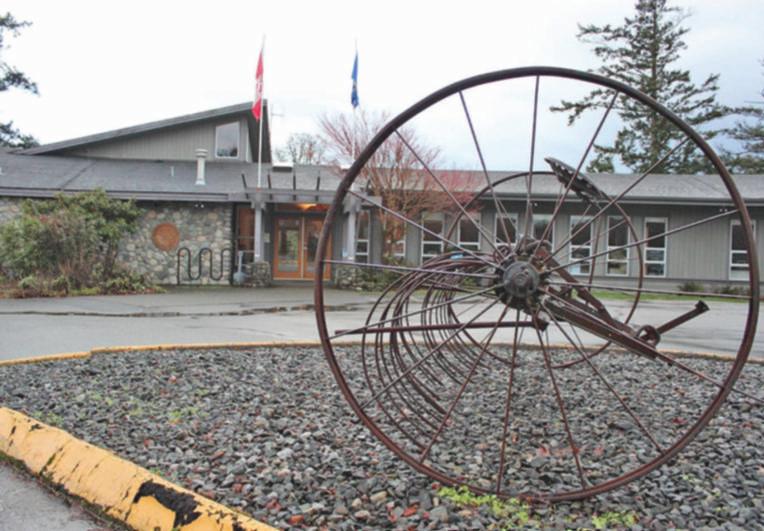
Tony Trozzo
A new nurse practitioner-led health clinic could soon take shape in Metchosin, offering residents a more local and collaborative approach to care.
At Monday night’s council meeting (Oct. 6), nurse practitioner Jill Cowlrick shared her proposal for a comprehensive health clinic that would bring a wide range of health providers together under one roof.
Cowlrick, who has lived in Metchosin for 10 years and has a decade of experience as a nurse practitioner, said the goal is to create a model that reflects the community’s values.
“We would have clinicians of different disciplines working in the clinic so we can collaborate so each person can see the right care person, at the right place, at the right time,” she said.
The proposed clinic would follow an integrated, interdisciplinary model that includes both Western and alternative healing approaches.
Cowlrick said it would combine publicly funded providers and private pay clinicians, serving residents of all ages, genders, identities, and abilities.
“The providers in the clinic would be a mix of publicly funded providers and private pay clinicians,” she said. “The goal would be to use existing buildings in Metchosin for the clinic to minimize building impact on the community.”
The preferred location is the old school build-




ing in the wing behind Mile Zero, which has additional space where other health practitioners could operate either in collaboration with the clinic or independently, according to Cowlrick.
Cowlrick said she has been in contact with the non-profit South Island Primary Care Society, which would partner on the project to help raise funds and manage operations once the clinic opens.
“Their mandate is to essentially help clinicians and community partners get up and running,” she said.
“I have been in contact with them, and they’re keen on helping. They will provide a contractor to look at the space (and) to discuss what renovations would be needed. They would also provide a cost estimate and then help us raise money to start the project.”
The society would establish a grant system to allow individuals or organizations in Metchosin to donate toward renovation costs and would also handle day-to-day administrative work once the clinic is operational.
Under the plan, the District of Metchosin would own the space, while the non-profit would oversee clinical operations, and Cowlrick would serve as medical director.
If approved, the project timeline includes community engagement and fundraising over the next six months, with renovations potentially beginning within a year and the clinic opening its doors in 12 to 18 months.












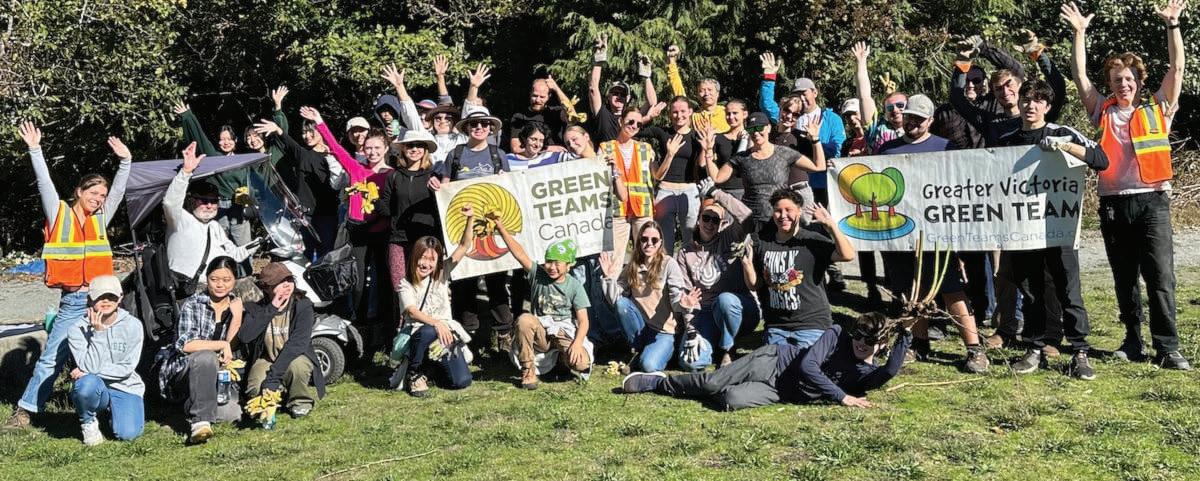
Invasive plants were left quaking in their ‘roots’ when the Colwood community joined forces with Green Teams Greater Victoria to clean up two local parks.
Forty folks gathered Oct. 5 in Colwood Creek Park, removing 26 cubic metres, or around 126 bathtubs worth, of invasive plant material.
Days later Oct. 7, over 70 Royal Bay Secondary School students and staff waged war on invasive Himalayan blackberry and Scotch broom in Murray’s Pond Park, removing five cubic metres, or around 31 bathtubs worth of scrub.
While the main focus is to uproot unwanted plants, the event not only benefits local ecosystems, it also offers the community an opportunity to connect with each other and nature.
“I just moved to Colwood, so this was a great chance to meet some people, get to know the area, and help restore the native ecosystem,” said Jacob, who took part in the Colwood Creek cleanup. “I walked away feeling great about the work we did and having made a couple of new friends.”
“To me, cleaning up is such a simple thing, however, it brings about the attention of so many others like random people walking by and wondering what it is, and they seem interested in it,” added Erik, another Colwood Creek participant.
“So I feel the impact is to bring about the most attention to the plant life of the local community and making it even more beautiful.”( For Royal Bay students, the exercise gives them an opportunity to apply what they have learned in the classroom in a hands-on, real-world setting.
It also gives them a feel for the power of
teamwork and collective action.
“I did a project on Scotch broom … and I think it’s really important to get out here and help our community … to help other plants grow and make our environment better,” said Royal Bay student Mikayla.
The Murray’s Pond Park was made possible through a partner-
ship with the City of Colwood and financial support from PATH Developments.
The Greater Victoria Green Team will continue hosting environmental activities across the region this fall, including invasive plant removals. To get involved, visit: www.meetup.com/greater-victoria-green-team/events.
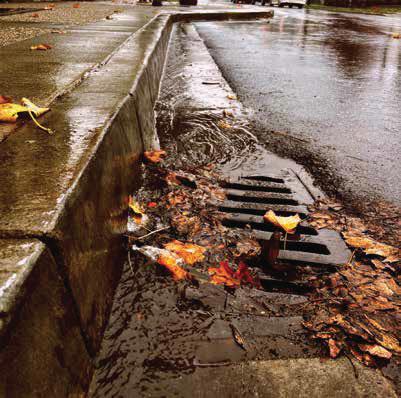





















































































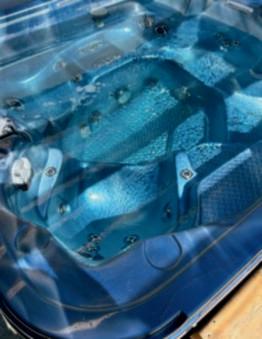
West Shore Arts Gala 2025 will be held on Nov. 6 from 6 p.m. 9 p.m. at the Olympic View Golf Club.
Organized by Juan de Fuca Performing Arts Centre Society, it will be an evening of inspiration and live entertainment in support of the West Shore Arts and Culture Centre.


Gala guests will get an exclusive project update with a sneak peek of the proposed centre design. The design was developed by Cascadia Architects with input from local arts groups and community members.
The event will feature the unveiling of the new West Shore Arts Guide, a resource listing artists and art groups in the community.
Included with their ticket, guests will enjoy a welcome cocktail from Ryes & Shine Craft Distillery, canapés from Table Nineteen and live and silent auctions.
The gala will feature live performances from Karel Roessingh and Joey Smith, The Rising Circus, Elevate Dance, Theatre al Dente, Joan Bessie Trio, and more.

The Juan de Fuca Performing Arts Centre Society formed in 2016 as a charitable not-forprofit. Its mission is to build a regional theatre and associated arts infrastructure in the West Shore, with support from the municipalities of Langford, Colwood, View Royal, Metchosin, Highlands, and Sooke, representing a population of about 79,000 people.
“Building a dedicated arts and culture centre for the West Shore has been a community dream for years,” said Judith Cullington, president of the

















Juan de Fuca Performing Arts Centre Society.
“The gala is a chance for us to celebrate our collective progress and raise funds to make that dream a reality filling a long-standing gap for local arts and culture groups.” Gala tickets are $185 per person with all proceeds directly supporting the creation of the West Shore Arts and Culture Centre. When five or more tickets are bought, a discount of 10% will be applied. Tickets are now available at eventbite.com
Sam Duerksen
For the last three months, award-winning director Deb Williams has been working with prisoners at Williams Head Institution to produce a moving theatrical work on family – told through their eyes.
Throughout that process, she’s finding more living proof of the incredible power of storytelling.
“The [inmates], they’ve talked about how it’s life-changing, that they never thought they could do these kinds of things. They are also connecting in ways they never thought they could. Once you’ve heard someone’s personal story, you – there’s not a better word for it in our language – but you fall in love with a person, you understand them for the first time, and you go, ‘Oh, I get it’.”
William Head on Stage (WHoS) is Canada’s only prison theatre company.
It’s 44th production, Baile de la Familia, which runs select dates from Oct. 10 until Nov. 1 out of the prison’s gymnasium, is an exploration of family in all its forms, whether by blood, chosen, adopted or the ones we find ourselves thrown into.
Created with Full Spectrum Arts Society (FSAS), the show embraces that family life is always a dance.
Williams described it as a “vulnerable” work that focuses on “resilience, connection and the beautiful messiness”of belonging. It features all true stories written by the WHoS

members. Williams wove the pieces together with playwright Rick Waines to create a compelling, cohesive whole.
Coming in from Vancouver, Williams, who is the co-creator of Mom’s the Word and The Flame, has worked with the inmates since June to develop their writing skills and own work.
It’s an experience unlike any she’s ever had. “This has been just amazing. Life-changing,” she said.
She watched their first small audience experience the play and saw the prisoners receive the reactions of “me too”.
It has only further increased their trust and bravery in the process and in each other, she said, including inmates who were initially nervous to share their stories.
The piece incorporates dance, poetry, singing, and some WHoS members even got to reconnect with instruments from their past.

“Each of them has a tour de force. I just want them to look incredible and to understand how human and marvellous they are.
“Not everybody gets judged on the worst day of their lives,” she added.
Breaking down barriers, challenging stereotypes and offering meaningful opportunities for transformation through the arts are all critical parts of the WHoS program.
For Williams, she has felt that transformation firsthand.
“It’s exciting to be involved in something that has such a legacy; there’s just such a history of art, change and connection.”
Baile de la Familia runs Oct. 10, 11, 17, 18, 24, 25, 31, and Nov. 1. Oct. 18 and 25 are matinee shows. Williams Head Institution is located at 6000 William Head Rd. in Metchosin. Tickets start at $38.25 through Eventbrite.





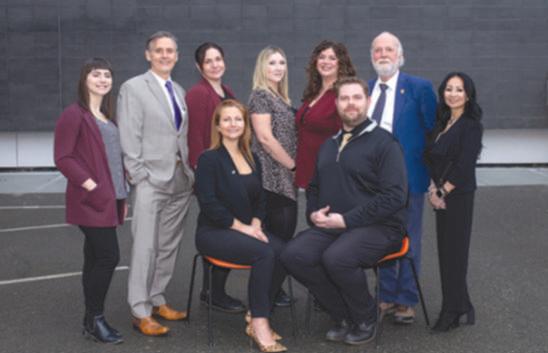










Opentothepublic Open
https://www.thunderbirdinsurance.com/ 250-385-9795•thunderbirdinsurance.com 1032YatesStreet• MON–FRI9AM–5:30PM • SAT10AM– 5PM
https://www.thunderbirdinsurance.com/ 250-385-9795•info@thunderbirdinsurance.com thunderbirdinsurance.com 1032YatesStreet•MON–FRI9AM–4PM
https://www.thunderbirdinsurance.com/ https://www.thunderbirdinsurance.com/
1032YatesStreet•MON-FRI8:30AM-4:30PMMON-FRI8:30-5:00SAT10:00-2:30
https://pembertonholmes.com/

www.pembertonholmes.com pembertonholmes. c

Olivier Laurin
This is the second part in a series looking at the evolution of B.C.’s opioid crisis. With the turn of the new millennium, changes in medicine led to pain being recognized as the “fifth vital sign,” placing it alongside body temperature, blood pressure, respiratory rate, and heart rate.
This paradigm shift meant that pain became a central focus of a doctor’s visit.
In the hope of easing their patients’ pain, the medical establishment, slowly but steadily, started prescribing a pea-sized pill of oxycodone mostly known under its brand name as OxyContin.
“There was a lot of resistance to prescribing opioids for a long time because doctors didn’t want folks to form physical dependencies,” said Katy Booth, project coordinator for the University of Victoria’s Substance Drug Checking. “But when there’s this new drug that has come around and ‘doesn’t have the same risks’… it seemed like a great solution.”
Developed by American pharmaceutical Purdue Pharma, OxyContin was released in 1996. Backed by aggressive marketing across North America, Purdue promoted the drug as a 12-hour painkiller, lasting more than twice as long as market alternatives.
This seemingly great resume made it the drug
of choice to alleviate a wide range of pains, Booth explained.
“OxyContin was the main (prescribed drug) because they were considered by many as an alternative to habit-forming or physical dependency… and therefore safer to prescribe, but it wasn’t. ”
In 2007, Purdue pleaded guilty to criminal charges for misleading the public, falsely claiming that OxyContin was less addictive and less prone to abuse – when in fact, the opposite was true.
Since the early ’80s, the volume of opioids sold to Canadian hospitals and pharmacies has increased by more than 3,000 per cent. In 2016 alone, over 20 million prescriptions for opioids were distributed to patients, making Canada the second-largest consumer of prescription painkillers in the world, after the U.S. As many as one in five Canadians used a medical-grade opioid during peak years, between 2008 and 2010.
As the harms of widespread narcotic use became clear, federal and provincial governments, along with the medical establishment, launched initiatives to curb both the medical supply and its consequences. These efforts included increasing prescription monitoring and enforcing stricter prescribing rules, among other things.
Following this crackdown, OxyContin was

delisted from Canadian drug formularies in 2012 and replaced with a reformulated tamper-resistant form of oxycodone, preventing it from being crushed to be snorted, injected or used in any other alternative ways than orally.
While well-intended, these actions overlooked the impact on the growing number of highrisk opioid users left without prescriptions to manage their dependence.
As the country observed a sharp rise in opioid addiction, thousands who had previously relied on medically prescribed painkillers turned to a flourishing illicit market, where a supply of increasingly potent and cheap narcotics emerged to fill a growing gap.
Although the country’s medical establishment played a significant role in fuelling this growing addiction epidemic, Booth believed that practitioners were not acting with ill intent.
“Doctors would often… want to help a person avoid a life of pain, so I think their intentions were really good. But we started to see a lot more prescribing of opioids for chronic conditions as opposed to it being more of an end-of-life drug or for acute post-surgical pains.”
Today, the medical consensus is that opioids should be a last resort for managing chronic pain.
Yet, the damage was done and the emergence of a new unforeseen and deadlier trend quietly crept in.


First synthesized from morphine in 1874, the Bayer Company of Germany introduced heroin for medical use in 1898. Physicians remained unaware of its addiction potential for years. (Photo courtesy of the DEA)
“We knew Oxys were being reformulated and we knew heroin was hard to get, but it was difficult to know what would happen (next),” said Booth. “I don’t think many of us thought it would be fentanyl.”Number one killer
First synthesized in Belgium in 1959, fentanyl was first used clinically as an intravenous anesthetic. It has since become one of the most important synthetic opioid analgesics in medicine, most often used intravenously for pain management during surgery.
It is approximately 100 times more potent than morphine and 50 times more potent than heroin.
According to Booth, there are a few reasons that made it the perfect breeding ground for why fentanyl became the opioid of choice on the black market.
Exponentially stronger than heroin, fentanyl is less risky to transport and move around since only a fraction of the amount is needed to achieve the same effect as lighter opioids, said Booth.
More importantly, as the government began cracking down on medically prescribed painkillers without providing proper support or treatment to help users quit, many turned to a black market that was ready to welcome them.
“Just because you make something illegal doesn’t mean it’s gonna stop being used or desired,” said Booth.



‘We could see that things were changing’: Fentanyl fuels B.C. drug crisis
“What about the people that are already misusing? Are we giving them access to methadone, opioid replacement therapies or alternatives? It was just never a part of the plan, so folks, being the resourceful people that they are, found alternative markets to satisfy their needs.”
This, among other factors, paved the way for what Booth described as a full-fledged opioid crisis.
“Around 2012, we knew that overdoses were increasing but we weren’t quite where we are now. It was the beginning. We could see that things were changing.”
Offering drug-testing services to Greater Victoria residents and beyond, Booth and her team have been at the forefront of shifting trends in the region over the past years, having first heard of fentanyl through anecdotal accounts from clients.
“They (started) telling us… that when they were using their heroin, their face started to tingle, so they knew that there was something that was slightly changing within the supply. That happened to be fentanyl that had started to creep in.”
In April 2016, B.C. declared a public health emergency after a steep and unprecedented spike in overdose deaths. That year, 995 people lost their lives.
By 2016, fentanyl was being found in 42 per cent of toxicology tests following an overdose. In 2023, fentanyl or a fentanyl analog was present in 85 per cent of those tests.
“At the beginning of 2019, the heroin contained fentanyl, whereas in 2020 it switched, where fentanyl rarely contains heroin,” said Booth.
While there are inherent risks with consuming fentanyl and other opioids, Booth emphasized that the primary cause of death is attributed to the growing toxicity and unpredictability of the street-level supply.
“If we were to simply have some semblance of stability within fentanyl, folks would adapt and they would figure out what their tolerances are,” she said. “But when you have an illicit market that is highly criminalized, one sample might be totally fine, but then the next sample can be three times stronger.”
Booth argued that these constant shifts in
the makeup of street drugs are largely tied to a nationwide “war on drugs” over fentanyl, which in recent years has become a big-ticket item at the local, provincial, and federal levels. With enforcement intensifying, the black market looked for alternative ways to supply its clientele. In response, traffickers began producing a wide array of unregulated substances, creating ever-stronger and deadlier drugs, while law enforcement was left reacting after the fact rather than preventing their spread.
In parallel, benzodiazepines, a group of depressant drugs prescribed to treat conditions such as anxiety disorders, insomnia, and seizures, entered the supply chain.
When laced with opioids, benzodiazepines are known “to give legs” to fentanyl, making its effects last longer, while also making it cheaper for users.
Rather than using it for recreational purposes, Booth said this mix, commonly known as benzo-down, serves a basic “survival” function, helping users avoid withdrawal symptoms, which can be fatal.
However, this combination can be particularly lethal, since naloxone, which can temporarily reverse opioid overdoses, doesn’t work in the presence of benzodiazepines, explained Booth. As a result, people consuming laced fentanyl unknowingly and without prior tolerance face a higher risk of death.
Armed with cutting-edge technology, UVic’s Substance Drug Checking’s mass spectrometer – which can identify substances at the molecular level – can detect drugs present at concentrations below five per cent. This allows staff to spot trace substances that can be lethal at concentrations as low as two per cent.
Having tested more than 9,000 drug samples across all their Vancouver Island locations last year, Booth and her team reported that the ever-changing nature of the fentanyl supply, containing increasingly potent synthetic compounds, at lower concentrations, makes it harder to detect, monitor and quantify deadly emerging trends.
“As (the supply) is constantly shifting and moving, we need to make sure that technology and innovations are also able to keep up so that we’re able to provide the best possible services and information to folks.”
https://www.ospreytreeservice.ca/

Osprey TreeServiceis a team of qualified arboristsandforestry professionalswhohave beenworkinginBCforestsforover35years. Ourcollectiveknowledgeandextensive resourcesmeanthat there isnojobtoobigor toochallengingforustotake on!


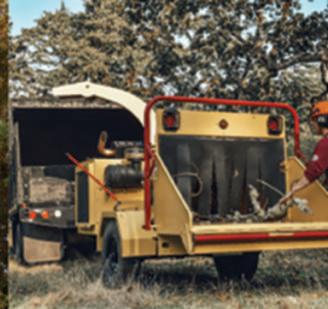
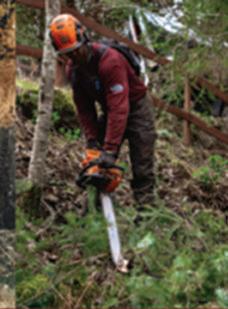
REMOVAL QUALIFIEDTREERISKASSESSMENTS(TRAQ)
PRUNING WILDFIREPROOFINGANDRISKASSESSMENTS
CHIPPING WILDLIFETREEASSESSMENTS
HEDGEMAINTENANCE DANGERTREEASSESSMENTS
EMERGENCYCALL-OUT WILDFIREFIGHTINGCREWS
CABLING&BRACING WILDFIRERISKREDUCTION
CERTIFIEDFALLERS LANDCLEARING
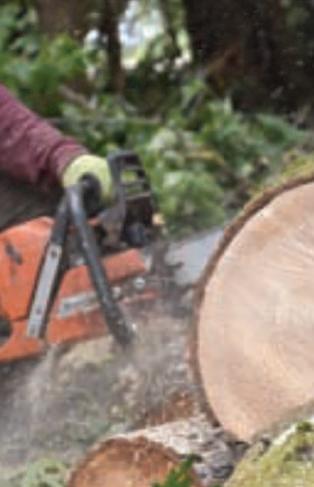


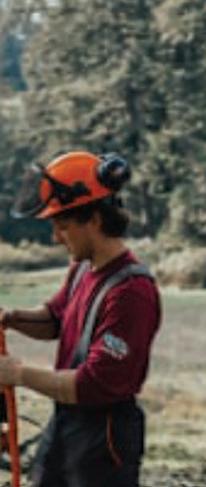
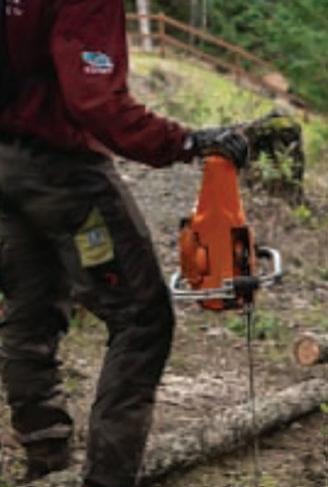



ospreytrees@shaw.ca @osprey.tree.service /ospreytreeservice



West Shore RCMP is investigating after four electric vehicle (EV) charging stations were vandalized.
According to police, EV charging cables were cut and stolen from stations in Colwood and Langford, resulting in thousands of dollars worth of damage.
The charging stations seem to have been targeted during early morning hours between
12 a.m. and approximately 3 a.m., said police in a news release
Using video surveillance collected from the scene, police believe the suspect is driving a light-coloured SUV, likely an older model Jeep patriot.
The suspect is described as a man with “lighter coloured skin,” wearing all dark coloured clothing.
The first incident occurred Sept. 30 at the Peninsula Co-op Gas Station, located
at 4397 West Shore Parkway.; followed by Juan de Fuca Recreation Centre on Oct. 3; Shell Gas Station located at 2890 West Shore Parkway, on Oct. 4; and Juan de Fuca Recreation Centre again on Oct. 4. Anyone who has information regarding the suspect or suspect vehicle, is encouraged to call West Shore RCMP at 250474-2264. Reports can also be made anonymously via Crime Stoppers online or by calling 1-800-222-8477.
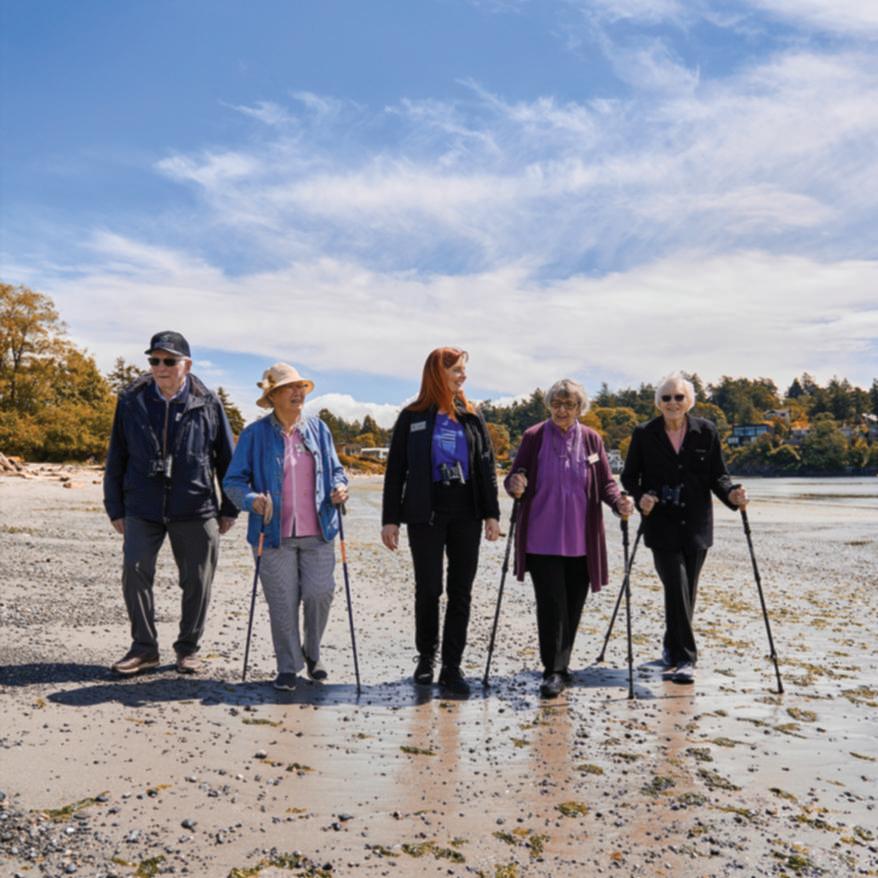
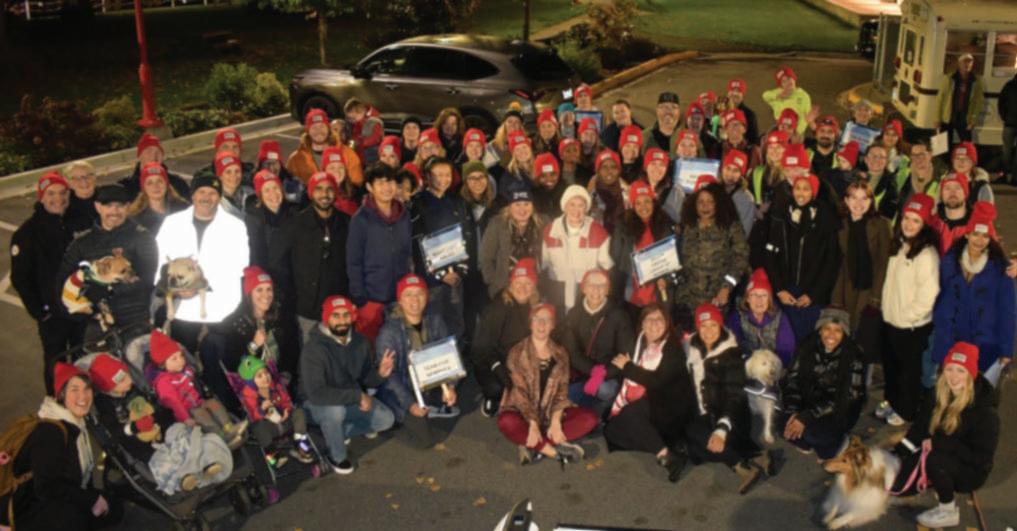
A walk to benefit domestic violence and transitional support services returns to Greater Victoria in October.
Royal LePage Coast Capital Realty and the Cridge Centre are organizing the third annual Night Light Walk on Oct. 21 at 6 p.m. at the Esquimalt Gorge Park Pavilion.
The public is invited to the three-kilometre walk along a lantern-lit pathway to help raise urgently needed funds and awareness for intimate partner violence and prevention programs in Victoria.
The Night Light Walk has raised over $50,000 for the Cridge Centre for the Family and aims
to raise $35,000 this year. Organizers are encouraging the public to register, form teams, volunteer and donate to help sustain the vital services.
Royal LePage Shelter Foundation is the largest public foundation in Canada exclusively dedicated to funding women’s shelters. To-date, the foundation supports 200 local women’s shelters and has raised $52 million since 1998.
Royal LePage Coast Capital supports the efforts of the Royal LePage Shelter Foundation in addressing homelessness and intimate partner violence in communities across Canada through fundraising efforts and volunteer work.



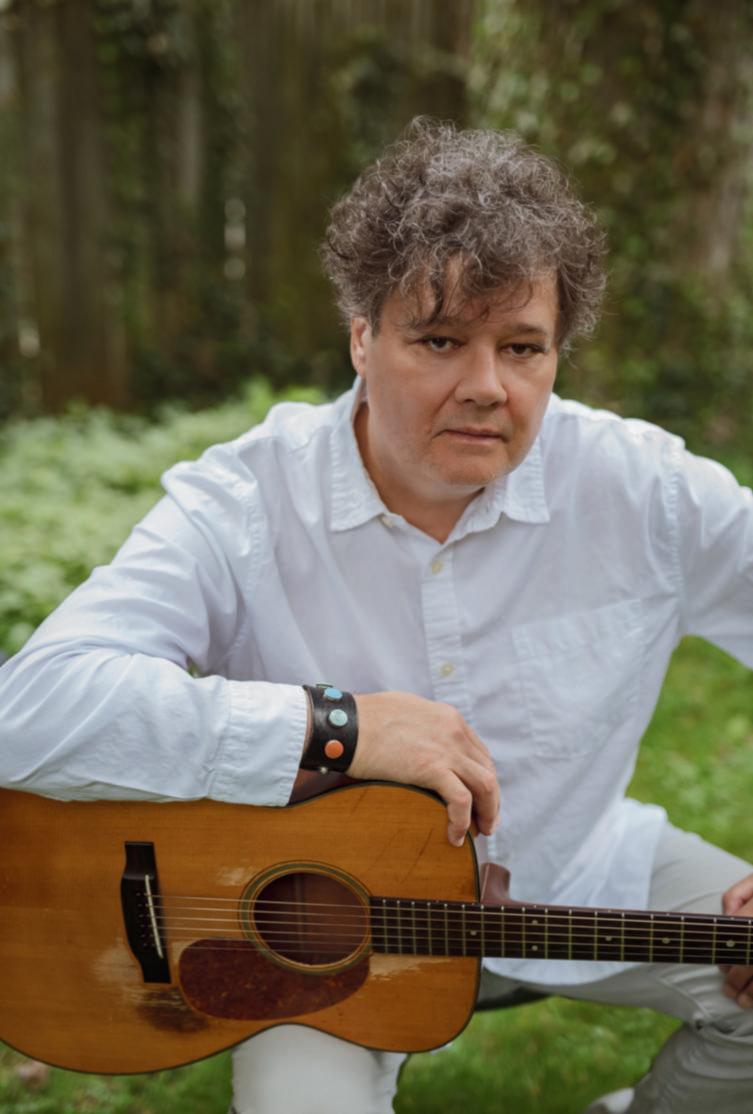






























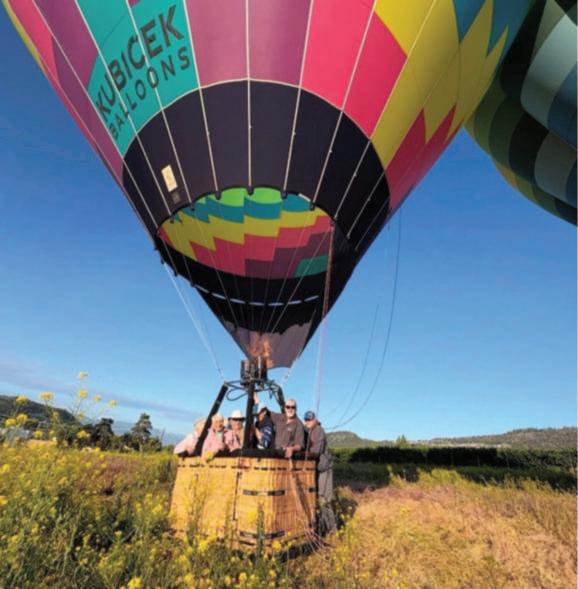


Disturbing headlines, tariffs, rising costs, and an exodus of young people: problems face Greater Victoria, but those things won’t change without a beacon of hope and a plan of possibility.
That’s the message from South Island Prosperity Partnership’s (SIPP) in their launch of The Possibility Charter, a community-driven pledge to build Greater Victoria’s future on a foundation of hope, creativity and entrepreneurship.
The non-profit organization consists of municipal governments, First Nations, post-secondaries, major employers, industry associations and fellow non-profits.
Their goal to diversify and develop the Southern Vancouver Island economy through collaboration.
SIPP launched the charter, a first of its kind in Canada, on Oct. 7 at COAST Ocean Innovation Hub alongside the unveiling of their five-year economic development plan for the region, Rising Economy 2030.
“It’s a call to action for Greater Victoria to embrace creativity, take risks and co-create a future where people and businesses can thrive together,” says Aaron Stone, CEO of SIPP. “By pairing the Charter with SIPP’s five-year plan, we are giving our region both the vision and a plan to succeed.”
Dallas Gislason,
SIPP’s executive director, regional economies and lead of the taskforce secretariat, said that the charter is “really just a launch point” for further action that will drive momentum.
One area of focus is invigorating young people and their energy, ideas and innovation with the tools and programs they need to succeed, he said.
“Then we can actually engage the business community so they’ll have mentors, champions, access to capital, and move them along that continuum of idea into reality.”
It ties into an area that he identifies as key to focus on first: hope.
“Focus on what’s strong, not on what’s
wrong,” he said. “It’s easy for us to point out all the challenges, and there are a lot of these big external forces coming at us. One thing we can do as a region is really get at our strengths in front of us and ask, ‘How do we build upon
these?’”
The strengths identified in the economic plan include the blue economy, clean tech and life sciences.
The plan also highlighted four pillars of a new economy: resilience, inclusivity, sustainability and en-
trepreneurship.
SIPP is already working with businesses, including the Centre for Ocean Applied Sustainable Technologies (COAST), which he says needs another “growth surge”to “actualize our strengths.” That work includes
advancements in clean energy, autonomous marine vessels and ocean data.
SIPP aims to attract 15 new companies to the region in the ocean tech space, as well as upscale over 1,500 people into the blue economy.
Gislason said the second key focus is boosting the competitiveness of local manufacturers in markets outside the U.S. SIPP is already working with companies to improve their efficiency






so they can drive down costs and compete globally.
Other key actions include building on the “tremendous momentum” built through the Indigenous Prosperity Centre, and piloting a model to keep ownership of local real estate in community hands.
The event featured a panel of four Greater Victoria leaders, including Olivia Wein, recent UVic business graduate; Tinka Robev, owner of Puzzle Lab; Ashka Wirk of Wirk Consulting; and Robert Mittelman, a dean at Royal Roads University. They shared their concerns, hopes and what they saw as exciting about the Charter.
“I think that this initiative is really bringing humanity back to prosperity. Beyond just pure bottom-line capitalism, what are we trying to build in this region?” said Robev.Leaders share tangible actions inspired by the Charter
After the event, Victoria News asked some at the event a question: what is an action you feel inspired to take based on what you heard here today?
Tinka Robev, owner of Puzzle Lab: “First, I’m going to share this beautiful document

with all my networks and try to spread the energy from the room today to my broader community. One very actionable thing I heard was hiring students, looking at the co-op programs and engaging local students who are coming up
through the system to get them involved in real-life experiences.”
Steve Duck, Sidney councillor: “One action is collaboration at all levels in terms of shared services, and we’ve seen that’s been demonstrated
throughout the municipalities. I think we need to expand shared services.”
Darlene Hollstein, the Bay Centre: “Keep the optimism going. I’m a very optimistic person by trade, but I think it’s easy, as they noted, to get down into the negative. You can send that message out into the community, and I have that ability through the Bay Centre and all the actions we do within the community and with our retailers. I’m actually very excited about this new Charter.”
Olivia Wein, recent UVic business graduate: “I’m going to speak with Brock Smith, who leads a mentorship program. Basically, it’s like an incubator for markets; they do little markets and entrepreneurship with young people in high school, and I would love to get involved and go speak with young people.”
Chris Coleman, Victoria councillor: “There’s a myriad of actions we can take, but part is the way we create opportunities for the next generation. In the panel’s speeches, the young graduate from UVic knocked it out of the park. She referenced Dr. Brock Smith (UVic School of Business). He runs a program and public workshop where young entrepreneurs can show their products – they usually do it in the Bay Centre. They had 200 young entrepreneurs presenting their products last year and learning business skills. That’s the beginning of setting down roots for the next generation of entrepreneurs: to go out and support people like Dr. Smith.”
Alex Brocklebank, Island Savings: “Get awareness out about what SIPP is doing … It’s pretty inspiring.”



Tony Trozzo
When James Swan teed off at Oakfield Golf & Country Club in Nova Scotia, he wasn’t alone.
His dad was on the bag, his mom and grandpa were in the gallery, and together they watched the 2019 Esquimalt High grad battle his way to a tie for fourth at the PGA of Canada Assistants’ Championship.
For Swan, 23, it was less about scorecards and more about sharing a first.
“I think the expectations for the week were to make my grandpa proud, make my dad proud, and show them what I can do out on the golf course,” Swan told Victoria News.
The Olympic View Golf Club professional finished the 54-hole event, held from Sept. 15 to 18, at seven under par with rounds of 70, 68, and 71. He made 34 pars, four bogeys, two double bogeys, 13 birdies, and one eagle throughout the week.
He was the lone Vancouver Island participant in a 66-player field that gathered from across the country.
Heading into the week, Swan set a high bar for himself.
“Obviously, always pretty high expectations. You don’t want to go out there thinking you can’t compete or be in the mix,” he said. “Top 10 was our goal. Top five we thought was achievable, so I’m pretty happy with

how the week played out for me.”
The week started with little rest.
Swan worked a full shift at Olympic View on the Saturday before the tournament, then caught a late flight that took him through Calgary and into Halifax on Sunday morning.
“I probably need to catch up on some sleep,” he joked, describing a





the action, not just spectating,”Swan said. “This was the first time he got to see me play professionally.”
Swan began the final round just two shots off the lead and played himself into contention with timely birdies, but a bogey on 17 ended his chances of forcing a playoff.
“A late bogey on 17 kind of cost me, but really, regardless of that bogey, I’m really happy with my performance that week,” he said.
In the end, Nova Scotia’s Josh Landine won the championship, defeating Yohann Benson on the first playoff hole. Swan’s tie for fourth earned him $1,502.50 from the $32,600 purse.
blur of travel that left little time for practice.
Still, he managed to walk the course before his official practice round on Monday and felt comfortable enough to settle in.
Having his dad on the bag made it all the more memorable.
“He might have been a little more

nervous than I was on the first hole in rounds two and three,”Swan recalled.
“But he held it together, and I think he was pretty proud of how he did that week.”
Granddad Jim, a weekend golfer himself, joined the trip and watched as much as his knee would allow.
“It was pretty cool to have him in on



It capped a productive first season as a professional for Swan, who turned pro in April after a standout collegiate career at North Idaho College, where he picked up seven wins and the 2022 Conference Player of the Year award. This year on the Vancouver Island Club Professional Tour, he has won twice, first at Cordova Bay in May, and then at Cowichan in August, which places him seventh in the order of merit.
But this past week, while the leaderboard reflected the golf, for Swan it was really about family. Three generations of Swans were together, and that’s something no leaderboard can








THE MOSS MAN 29th year!
Washing Darren 778-352-3315 Free Estimates!WCB themossman.ca
Buying all Gold, Silver, Jewelry, and Antiques. Call us Today!
*Gold in any form or purity (coins, watches, jewelry, scrap, damaged or broken pieces)
*Sterling silver in any form (jewelry, coins, watches, tea sets, cutlery, vanity sets)
*Jewelry, encompassing exquisite fine pieces, antique treasures, designer creations, and stylish costume designs.
*High-end & antique wristwatches (Rolex, Tudor, Omega, Longines)
*Pocket Watches, Watch chains and Fobs
*Asian arts (porcelain, carvings, bronze, jade, paintings, ivory)
*First Nations art (carvings, prints/paintings, argillite, soapstone, baskets, clothing)
*Paintings & sculptures (including bronzes)
*Military memorabilia 778-513-5316 Corrigall1993@gmail.com
LOOKING TO LOCATE
Jamie Paholkin born April 6, 1984, last known residence in Maple Ridge, British Columbia. Son of Maria Horvath and Frederick Paholkin, nephew of Bryon Paholkin, and grandson of Frederick William Stevens, late of Lisle, Ontario.
Anyone with any information is asked to contact Donnell Law Group, Attention: Sandra Garrett, 183 Simcoe Avenue, Keswick, Ontario, L4P 2H6. Telephone: (905) 476-9100, Fax: (905) 476-2027; sgarrett@donnellgroup.ca





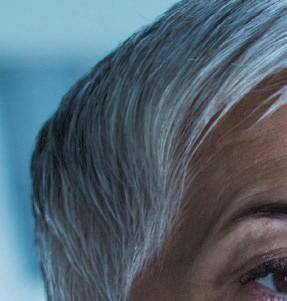

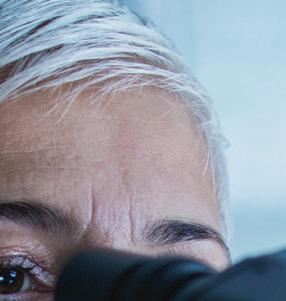
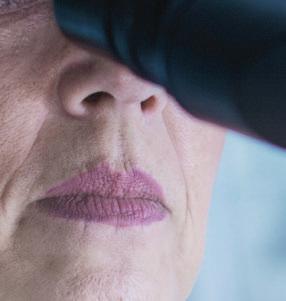




Poodle. Call or Text 250-240-0388

Cook Manager
Hiring date : ASAP
$36 to $40 CAD p/hour 1901 Sooke Rd #124, Victoria, BC Contact : 647-239-1210 OR email papajohnscolwood@gmail.com


















Down 1. Do it now!
Across 1. Drinks
5. Schusser's support
9. Small goose
14. Use a straw
15. Prefix with pad
16. Refuges
17. Healthy berry
18. Alcatraz escape vehicle
19. In first place
20. Method of keeping food without it going bad
23. Attempt to score
24. Brontë heroine
25. League for the Sun, Sky and Storm
28. Barely sufficient
33. Newspaper execs.
36. In the least
39. Asian language
40. Way of preparing food rapidly
44. Starting __ __ the bottom
45. Foot-operated lever
46. Sound systems, briefly
47. Lassie, e.g.
50. Derive (from)
52. So-so grades
55. Klutz's cry
58. Spaghetti go-with
64. Well known Argentinian
65. Bad marks
66. Small musical group
67. Old adders
68. Dutch cheese
69. Bespectacled Ghostbuster
70. Type of bank loan
71. Physics term
72. Shelters
2. Star Wars director
3. PayPal product
4. Means of reaching the top
5. Like some traffic
6. Market pessimist or picnic invader!
7. 1966 Michael Caine role
8. Posh
9. Grandma knitting duty
10. Hindu princess
11. Concerning 12. Light gas
13. Small amt. in baking
21. Old lab heaters
22. Recliner part
26. A.C. capacity, abbr.
27. Group with many boomers
29. Sea bird
30. Film crew member
31. Simpson's character
32. Floor items
33. Ben Hur, e.g.
34. Bond opponent
35. Envelope wax
37. Marvin or Van Cleef
38. Watch readouts, briefly
41. Cardinal letters
42. Bran source
43. Spreads
48. Culturally significant
49. ER readout
51. Made a ditch for a castle
53. Closed
54. Run down
56. Cleanse
57. Inheritor
58. Fashionable clothing store
59. Toothpaste, with B
60. Motive leader
61. Penn name
62. Salinger lass
63. Ages and ages
64. Part of a tuba's sound
Answers from last weeks puzzle


By Myles Mellor









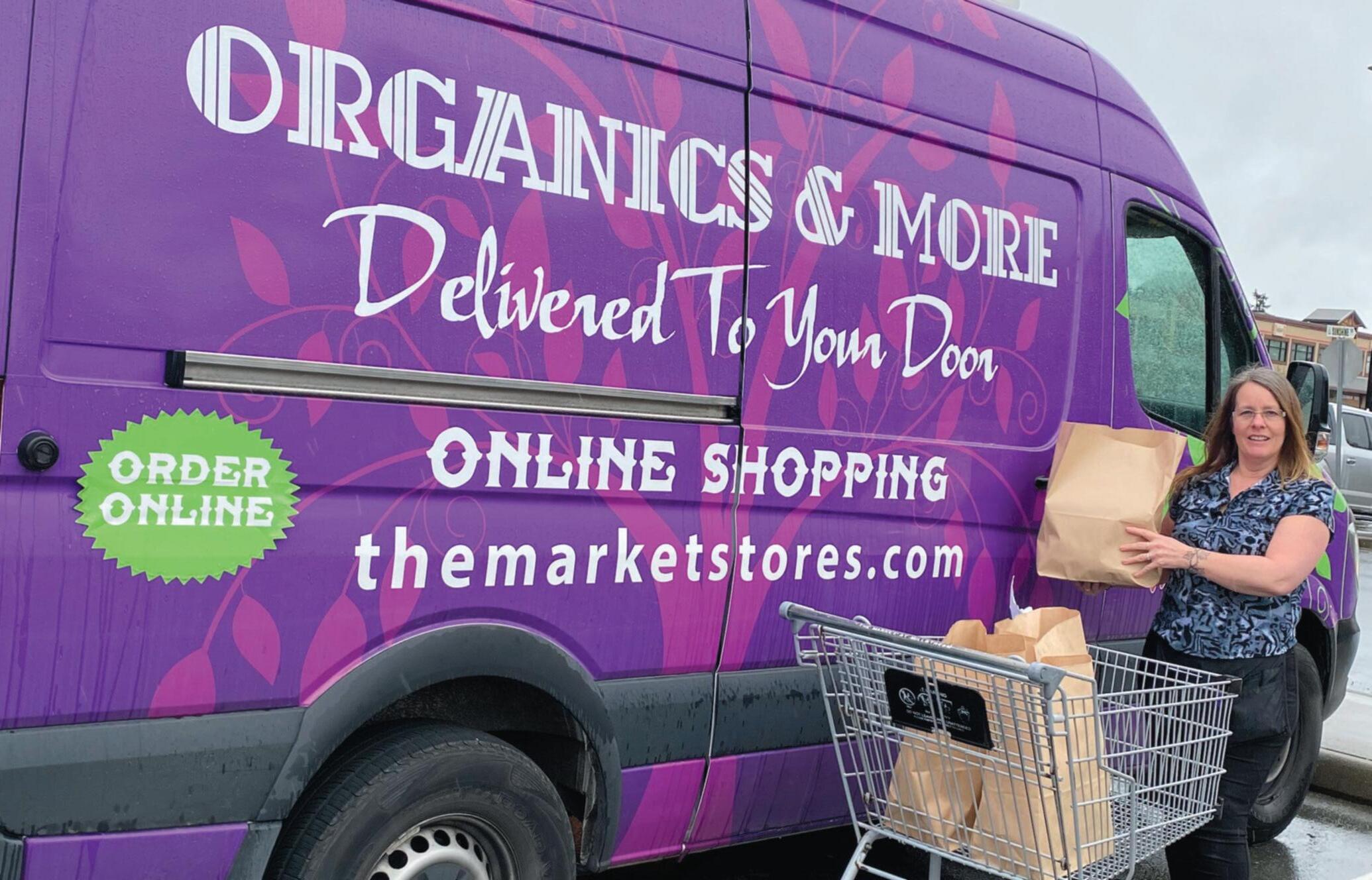








































































































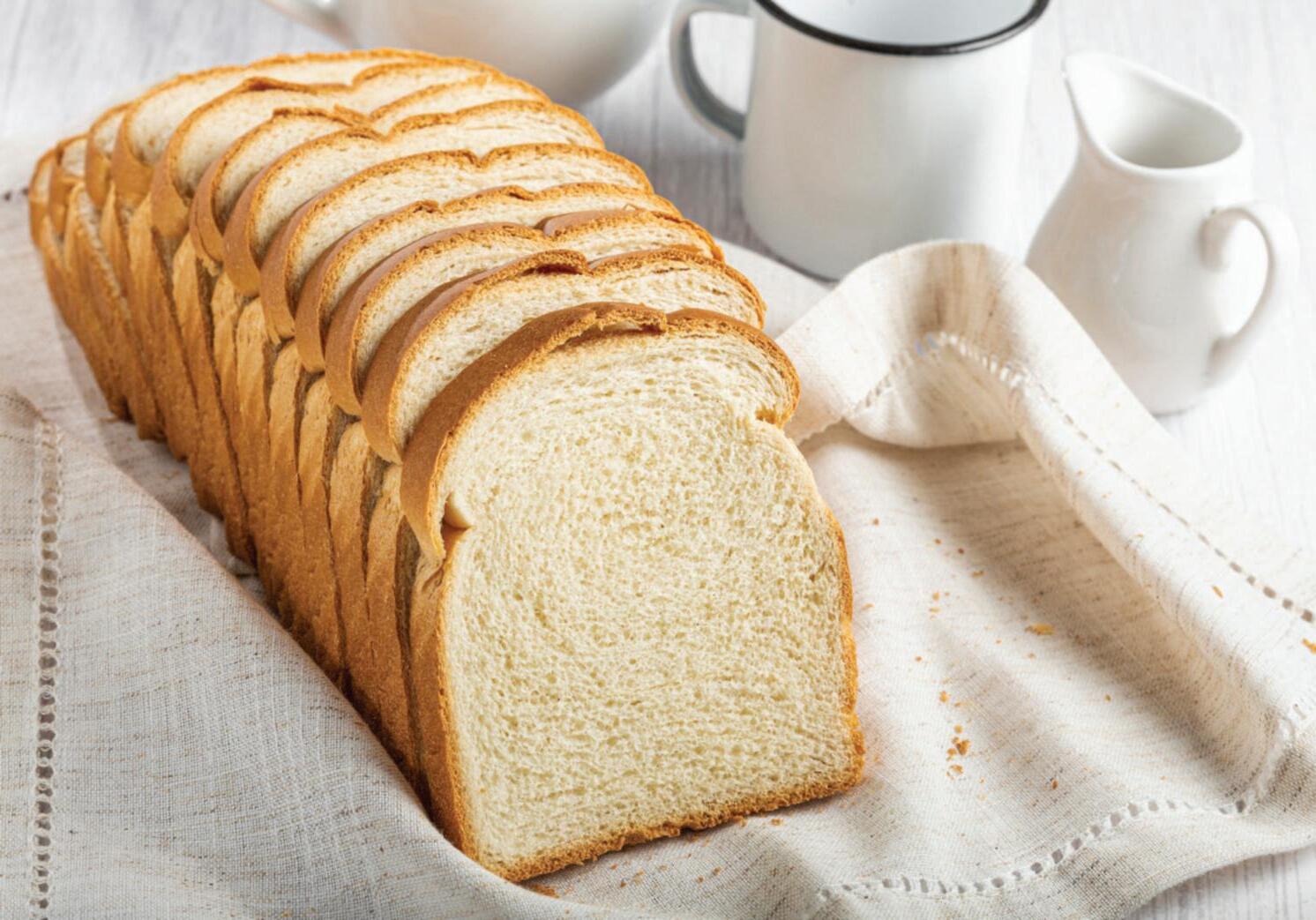









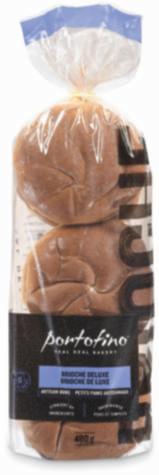















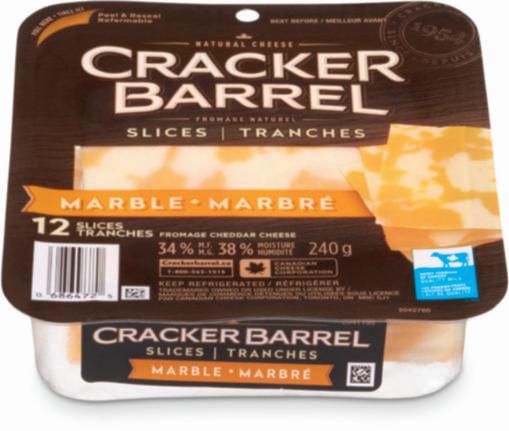








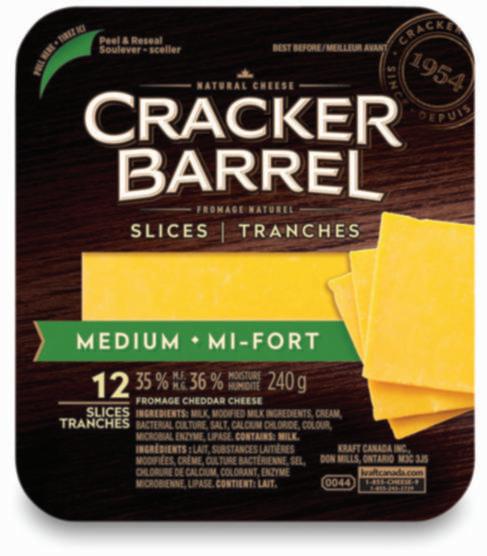










699 3

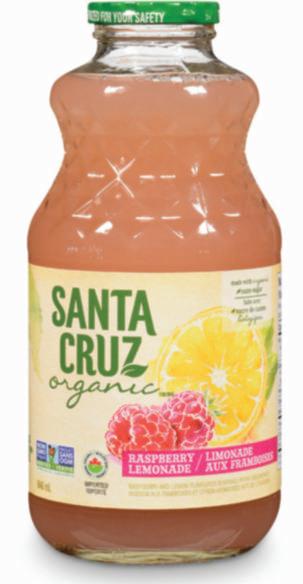
5







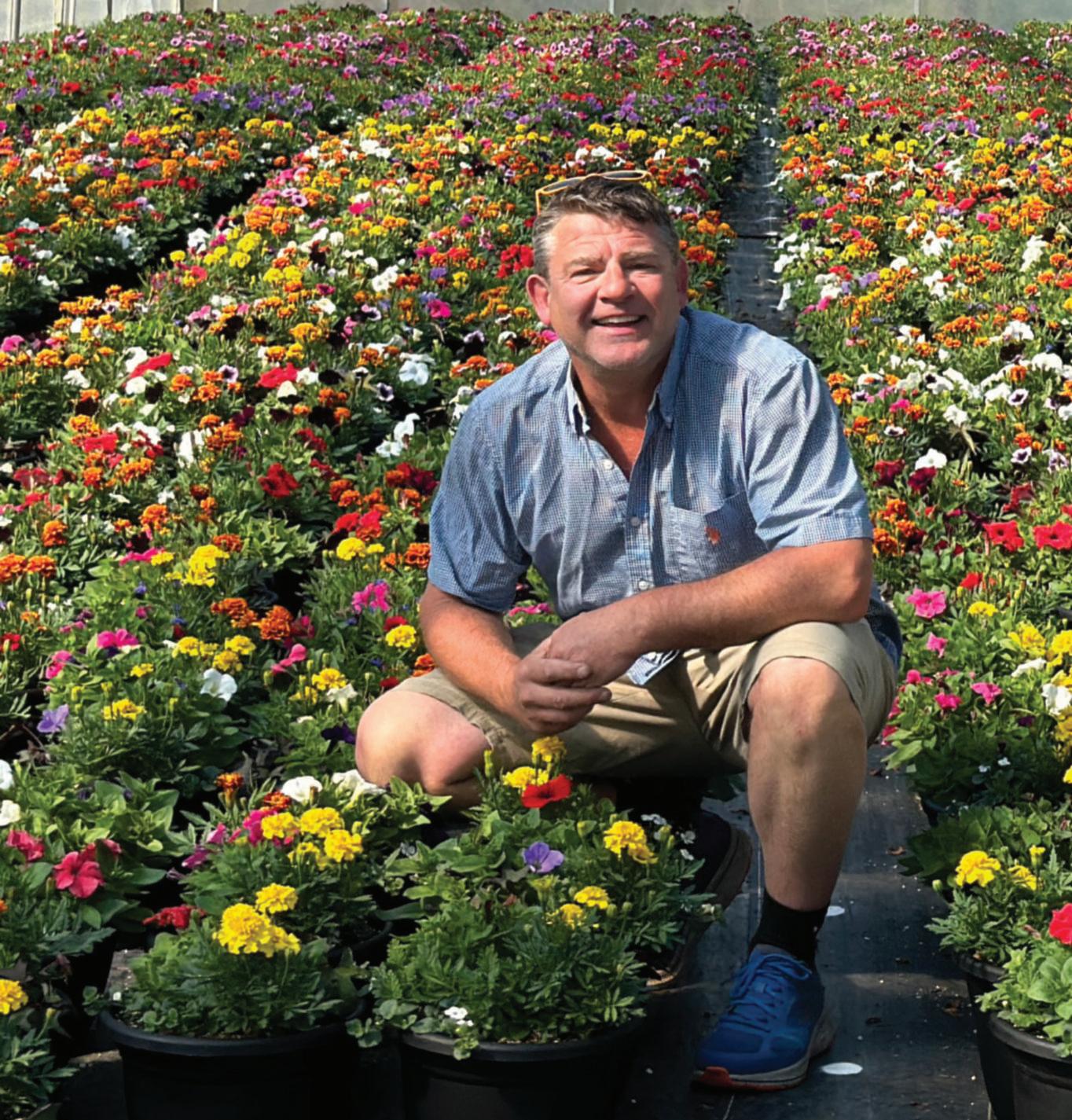

$4 599 $
5



Founded in 2002, C&C Growers provides quality wholesale garden plants to local retail outlets on Vancouver Island & the Lower Mainland. Growing with our community, we hire locally and take pride in helping beautify our city one petunia at a time.